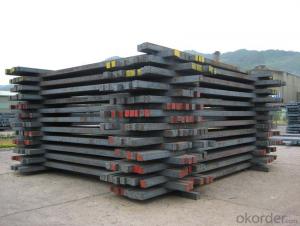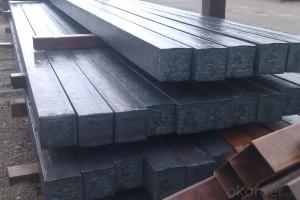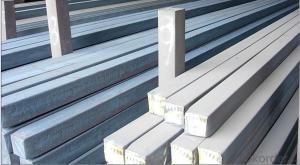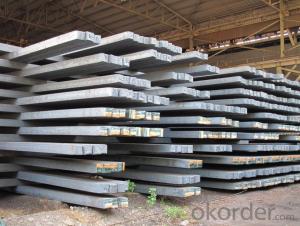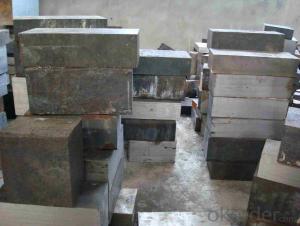Hot Rolled Square Steel Billet 3SP Standard 120mm
- Loading Port:
- Shanghai
- Payment Terms:
- TT OR LC
- Min Order Qty:
- 2000 m.t.
- Supply Capability:
- 10000 m.t./month
OKorder Service Pledge
OKorder Financial Service
You Might Also Like
Structure of Hot Rolled Square Steel Billet 3SP Standard 120mm

Description of Hot Rolled Square Steel Billet 3SP Standard 120mm
PPGI is made by cold rolled steel sheet and galvanized steel sheets as baseplate, through the surface pretreatment (degreasing, cleaning, chemical conversion processing), coated by the method of continuous coatings (roller coating method),
and after roasting and cooling. Zinc coating: Z60, Z80, Z100, Z120, Z180, Z275, G30, G60, G90
Alu-zinc coating: AZ60, AZ80, AZ100, AZ120, AZ180, G30, G60, G90
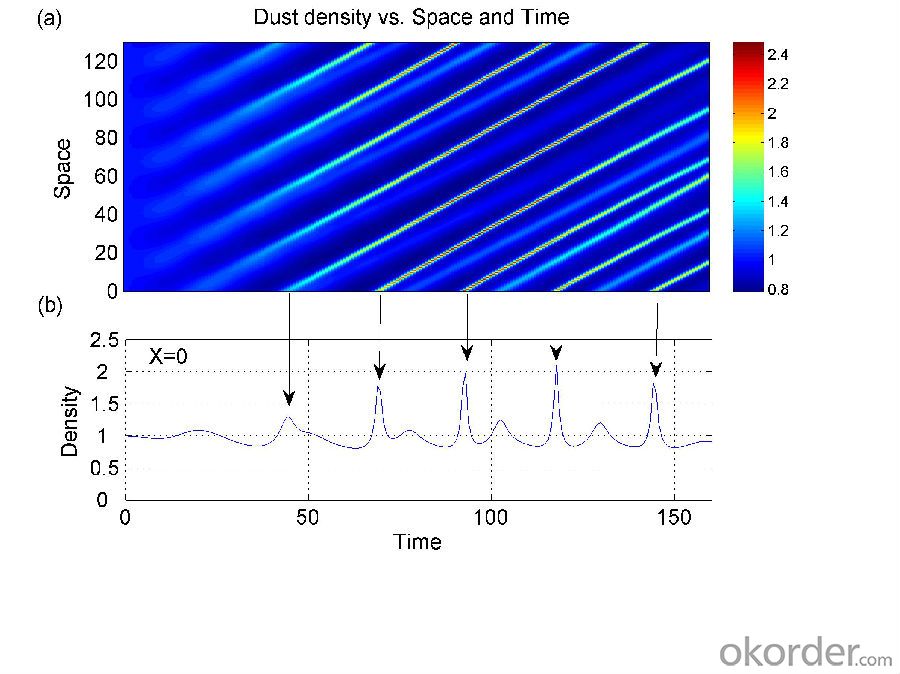
Main Feature of Hot Rolled Square Steel Billet 3SP Standard 120mm
1) Excellent corrosion resistance: The zinc layer provides a good protection of Pre-painted Galvanizeed Steel Sheet.
2) High heat resistance: The reflective surface of the material aids in efficiently reflecting the sunlight away and in turn reducing the amount of heat transmitted. The thermal reflectivity converts into energy savings.
3) Aesthetics: Pre-Painted Galvanized steel sheet is available in plethora of patterns and multiple sizes as per the requirements that given by our customers.
4) Versatility: can be used in the various areas.Standard seaworthy export packing: 3 layers of packing, inside is kraft paper, water plastic film is in the middle and outside GI steel sheet to be covered by steel strips with lock, with inner coil sleeve.
Applications of Hot Rolled Square Steel Billet 3SP Standard 120mm
1) Automotive bodies: filters, fuel tanks, etc.
2) Construction materials: roofings, welding pipes,
3) Electric and electronic appliances: computer cans, etc.
4) Steel cans: containers, etc.
5) Steel furniture: washing machines, refrigerators, microwaves, etc.
6) Drums
7) Office equipment: printer, recorders, etc.
8) Motors and transformers

Specifications of Hot Rolled Square Steel Billet 3SP Standard 120mm
| Classified symbol | Yield Point Minimum N/mm2 | Tensile Strength Minimum | Elongation Minimum % | Application | ||||
| N/mm2 | Nominal Thickness mm (t) | |||||||
| JIS | Yogic | 0.25-0.4 | 0.4-0.6 | 0.6-1.0 | 1.0-1.6 | |||
| G3312 | specification | |||||||
| CGCC | CGCC | -205 | -270 | -20 | -21 | -24 | -24 | Commercial |
| CGCD | CGCD | --- | 270 | --- | 27 | 31 | 32 | Drawing |
| --- | CG340 | 245 | 340 | 20 | 20 | 20 | 20 | Structural |
| CGC400 | CG400 | 295 | 400 | 16 | 17 | 18 | 18 | Structural |
| CGC440 | CG440 | 335 | 440 | 14 | 15 | 16 | 18 | Structural |
| CGC490 | CG490 | 365 | 490 | 12 | 13 | 14 | 16 | Structural |
| CGC570 | CG570 | 560 | 570 | --- | --- | --- | --- | Structural |
| ASTM Designation | Yield Point Minimum | Tensile Strength Minimum | Elongation Minimum % | Application | Q/BQB 445-2004(China standard) | ASM A653/A653M | JISG 3312 | |
| ksi(MPa) | ksi(MPa) | TDC51D+Z | (CS TYPE A+Z) | CGCC | ||||
| A653(M)-99 CS TYPE A,B,C | --- | --- | --- | Commercial | TDC52D+Z | CGCD | ||
| A653(M)-99 FS | --- | --- | --- | Lock Forming | TS250GD+Z | (G250+Z) | - | |
| A653(M)-99 DS | --- | --- | --- | Drawing | TS300GS+Z | (G300+Z) | CGC 400 | |
| A653(M)-99 SS Grade33(230) | 33(230) | 45(310) | 20 | Structural | TS350GD+Z | (G350+Z) | CGC490 | |
| A653(M)-99 SS Grade37(255) | 37(255) | 52(360) | 18 | Structural | TS550GD+Z | (G550+Z) | CGC570 | |
| A653(M)-99 SS Grade40(275) | 40(275) | 55(380) | 16 | Structural | ||||
| A653(M)-99 SS Grade50(345) | 50(345) | 65(450) | 12 | Structural | ||||
| A653(M)-99 SS Grade80(550) | 80(550) | 82(570) | --- | Structural | ||||
FAQ of Hot Rolled Square Steel Billet 3SP Standard 120mm
We have organized several common questions for our clients,may help you sincerely:
1. How Can I Visit There?
Our company is located in Tianjin City, China, near Beijing. You can fly to Tianjin Airport Directly. All our clients, from home or aboard, are warmly welcome to visit us!
2. How Can I Get Some Sample?
We are honored to offer you sample.
3. Why choose CNBM?
1, ISO, BV, CE, SGS approved.
2, Competitive price and quality.
3, Efficient service team online for 24 hours.
4, Smooth production ability(50000tons/month) .
5, quick delivery and standard exporting package.
6, Flexible payment with T/T, L/C, Paypal, Kunlun bank, etc
- Q:What are the different types of steel billet casting methods?
- There are several different methods used for steel billet casting, each with its own advantages and applications. The most commonly used methods include continuous casting, static casting, and centrifugal casting. 1. Continuous Casting: This is the most widely used method for steel billet casting. In this process, molten steel is poured into a water-cooled mold, where it solidifies into a continuous strand. The strand is then cut into desired lengths by a cutting machine. Continuous casting allows for high production rates and consistent quality, making it ideal for mass production of steel billets. 2. Static Casting: Also known as ingot casting, this method involves pouring molten steel into a stationary mold, where it solidifies into a solid billet. The mold is typically made of sand or metal, and the solidification process can be controlled to obtain desired properties. Static casting is often used for smaller production runs or when specific alloy compositions or shapes are required. 3. Centrifugal Casting: This method utilizes centrifugal force to distribute molten steel evenly within a rotating mold. As the mold spins, the molten steel is pushed towards the mold walls, resulting in a uniform casting with improved density and mechanical properties. Centrifugal casting is commonly used for large and complex billets, such as those used in pipe manufacturing or turbine components. These are the main methods used for steel billet casting; however, there may be variations or combinations of these methods depending on specific requirements or technological advancements.
- Q:What are the challenges faced in the distribution and supply chain of steel billets?
- The distribution and supply chain of steel billets encounter several challenges. Firstly, transportation poses a major obstacle due to the heavy and bulky nature of steel billets. Specialized equipment and infrastructure are necessary, which can result in higher logistics costs and difficulties in finding suitable transport options, particularly for international shipments. Secondly, the storage and inventory management of steel billets present challenges. Proper storage facilities are required to prevent corrosion and damage. Moreover, managing inventory levels and ensuring timely deliveries become complex as steel billets are sourced from multiple suppliers and delivered to various locations. Thirdly, maintaining quality control is a significant challenge. Consistent quality throughout the supply chain demands strict adherence to quality standards and effective quality control measures. Regular inspections, testing, and certification processes are necessary to ensure the integrity and suitability of the steel billets. Another challenge stems from fluctuating demand and market conditions. The steel industry is highly cyclical, with demand and prices influenced by economic fluctuations and global market trends. Consequently, forecasting demand, managing production capacity, and optimizing inventory levels to meet customer requirements while minimizing costs become difficult. Furthermore, global trade regulations and customs procedures create challenges. Compliance with various import and export regulations, including trade restrictions and tariffs, can affect the flow of steel billets across different countries, leading to delays and additional costs. Lastly, ensuring sustainable and responsible sourcing practices is increasingly important. Meeting environmental and social standards, such as responsible sourcing of raw materials and reducing carbon emissions, poses challenges for steel billet manufacturers and distributors. Implementing sustainable practices throughout the supply chain may involve additional costs and complexities. In conclusion, the distribution and supply chain of steel billets face challenges related to transportation, storage, quality control, demand fluctuations, trade regulations, and sustainable sourcing. Overcoming these challenges necessitates effective planning, strong partnerships, and the implementation of efficient processes to ensure a smooth and reliable supply of steel billets to customers.
- Q:How do steel billets compare to other forms of raw steel material?
- Steel billets are a preferred form of raw steel material due to their consistent shape and size, making them easier to handle and process. Compared to other forms like ingots or slabs, billets offer higher purity, improved mechanical properties, and better surface quality, making them ideal for various industrial applications.
- Q:What are the different heat treatment processes for alloy steel billets?
- There are several different heat treatment processes for alloy steel billets, including annealing, normalizing, quenching, and tempering. Annealing involves heating the billets to a high temperature and then slowly cooling them to relieve internal stresses and improve ductility. Normalizing is similar to annealing but involves air cooling instead of slow cooling. Quenching involves rapidly cooling the billets in a liquid medium, such as oil or water, to increase hardness and strength. Tempering is done after quenching and involves reheating the billets to a specific temperature and then cooling them slowly to reduce brittleness and improve toughness.
- Q:What are the different types of extrusion processes used for shaping steel billets?
- The different types of extrusion processes used for shaping steel billets include hot extrusion, cold extrusion, direct extrusion, indirect extrusion, and hydrostatic extrusion.
- Q:How are the surface defects of steel billets repaired?
- Various methods can be employed to repair the surface defects found in steel billets, depending on the type and severity of the defect. Common surface defects include cracks, seams, laps, and scale. One approach to repairing surface defects involves grinding or milling. This entails the utilization of abrasive tools or machines to remove the outer layer of the billet. Grinding can effectively eliminate small defects such as scale, pits, or minor cracks. However, it may not be suitable for extensive or deep defects. For more severe defects like cracks or seams, welding is a common repair technique. The damaged areas are heated to a suitable temperature and then filled using welding electrodes or filler materials. Skilled welders are required to ensure proper fusion and strength of the repaired area. Mechanical methods, such as peening or hammering, can also be employed to repair surface defects. These techniques involve the use of specialized tools to reshape and smooth out the affected areas. Peening can effectively eliminate shallow cracks or surface irregularities. Another method used to identify and repair surface defects in steel billets is ultrasonic testing. This technique utilizes high-frequency sound waves to detect any hidden cracks or flaws. Once the defects are identified, appropriate repair methods can be implemented. It is important to emphasize that the repair process for surface defects in steel billets necessitates careful inspection and assessment to determine the most suitable method. Quality control measures must be implemented to ensure that the repaired billets meet the required standards for strength and integrity.
- Q:How are steel billets used in the manufacturing of electrical equipment?
- Steel billets are often used as the raw material in the manufacturing of electrical equipment. They are typically melted and formed into specific shapes, such as coils or laminations, to create various components of electrical machinery. The high strength and durability of steel make it suitable for withstanding the demands of electrical equipment, ensuring reliable operation and long-term performance.
- Q:How is the quality of steel billets ensured during production?
- To ensure the quality of steel billets, various measures are implemented during the production process. Here are several key factors that contribute to this: 1. Raw materials selection: High-quality raw materials like iron ore, coal, and scrap metal are carefully chosen for the production of steel billets. These materials undergo rigorous testing to ensure they meet the necessary specifications and standards. 2. Melting and refining: The raw materials are melted and refined to produce the steel billets. This stage utilizes advanced technologies and equipment to control temperature and chemical composition, ensuring consistency and uniformity in the final product. 3. Continuous casting: The molten steel is poured into a continuous casting machine, where it solidifies into billet form. This process allows for precise control over cooling, resulting in billets with uniform dimensions and internal structure. 4. In-line inspection: Modern production facilities incorporate in-line inspection systems that continuously monitor and analyze the quality of the steel billets. Techniques like laser measurement, ultrasonic testing, and magnetic particle inspection are used to detect defects or abnormalities. 5. Heat treatment: Steel billets may undergo heat treatment processes like annealing or quenching to enhance their mechanical properties and eliminate residual stresses. These treatments are carefully controlled to achieve desired results and improve overall quality. 6. Testing and quality control: Comprehensive testing is conducted on the steel billets to ensure they meet required standards. Mechanical and chemical tests, such as tensile strength, hardness, and chemical composition analysis, are performed. Non-destructive testing methods like ultrasonic testing and X-ray inspection are used to detect internal defects or flaws. 7. Traceability and documentation: Detailed documentation is maintained throughout the production process to track each batch of steel billets. This includes information on the raw materials used and final testing results, ensuring traceability and providing a record for quality control purposes. By implementing these measures and following strict quality control procedures, steel manufacturers can ensure that the produced steel billets meet required standards and are suitable for further processing and use in various industries.
- Q:What is the chemical composition of steel billets?
- Steel billets are primarily composed of iron, with varying amounts of carbon and other alloying elements such as manganese, silicon, and trace amounts of sulfur and phosphorus.
- Q:How do steel billets contribute to the construction industry?
- The construction industry relies heavily on steel billets for several key reasons. Firstly, they serve as the primary material for producing a range of steel products used in construction, including beams, columns, and reinforcement bars. These products are essential for providing structural support and integrity to buildings and infrastructure projects. Steel billets are also vital in the manufacturing of precast concrete elements, which are widely utilized in construction. By reinforcing pre-stressed concrete beams with steel billets, their strength and durability are significantly enhanced. This enables the construction of larger and more intricate structures like bridges, stadiums, and high-rise buildings. Additionally, steel billets play a crucial role in the fabrication of steel pipes and tubes, which are extensively employed in water supply systems, sewage lines, and gas pipelines. These pipes ensure the reliable and efficient transportation of fluids and gases, thereby facilitating the proper functioning of various infrastructure networks. Apart from their structural applications, steel billets also contribute to the construction industry through their recyclability. Steel is one of the most globally recycled materials, and steel billets can be melted and reused multiple times without any loss in quality. This not only reduces the demand for new steel production but also minimizes environmental impact and waste generation. In summary, steel billets are indispensable in the construction industry due to their versatility, strength, and recyclability. They serve as the foundation for producing various steel products and play a critical role in constructing durable and sustainable buildings and infrastructure projects.
1. Manufacturer Overview |
|
|---|---|
| Location | |
| Year Established | |
| Annual Output Value | |
| Main Markets | |
| Company Certifications | |
2. Manufacturer Certificates |
|
|---|---|
| a) Certification Name | |
| Range | |
| Reference | |
| Validity Period | |
3. Manufacturer Capability |
|
|---|---|
| a)Trade Capacity | |
| Nearest Port | |
| Export Percentage | |
| No.of Employees in Trade Department | |
| Language Spoken: | |
| b)Factory Information | |
| Factory Size: | |
| No. of Production Lines | |
| Contract Manufacturing | |
| Product Price Range | |
Send your message to us
Hot Rolled Square Steel Billet 3SP Standard 120mm
- Loading Port:
- Shanghai
- Payment Terms:
- TT OR LC
- Min Order Qty:
- 2000 m.t.
- Supply Capability:
- 10000 m.t./month
OKorder Service Pledge
OKorder Financial Service
Similar products
New products
Hot products
Related keywords
